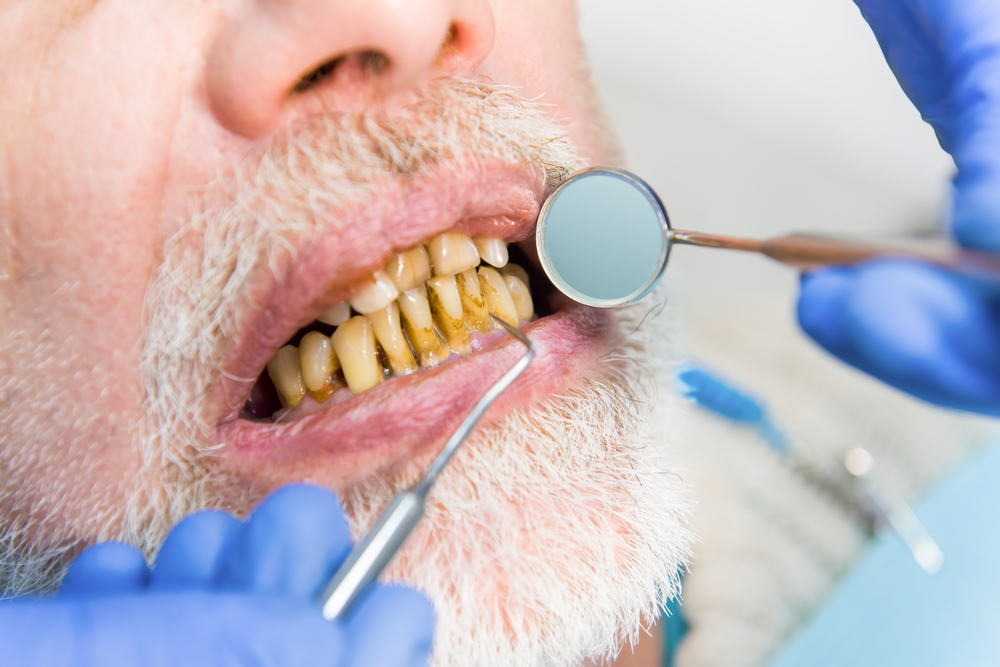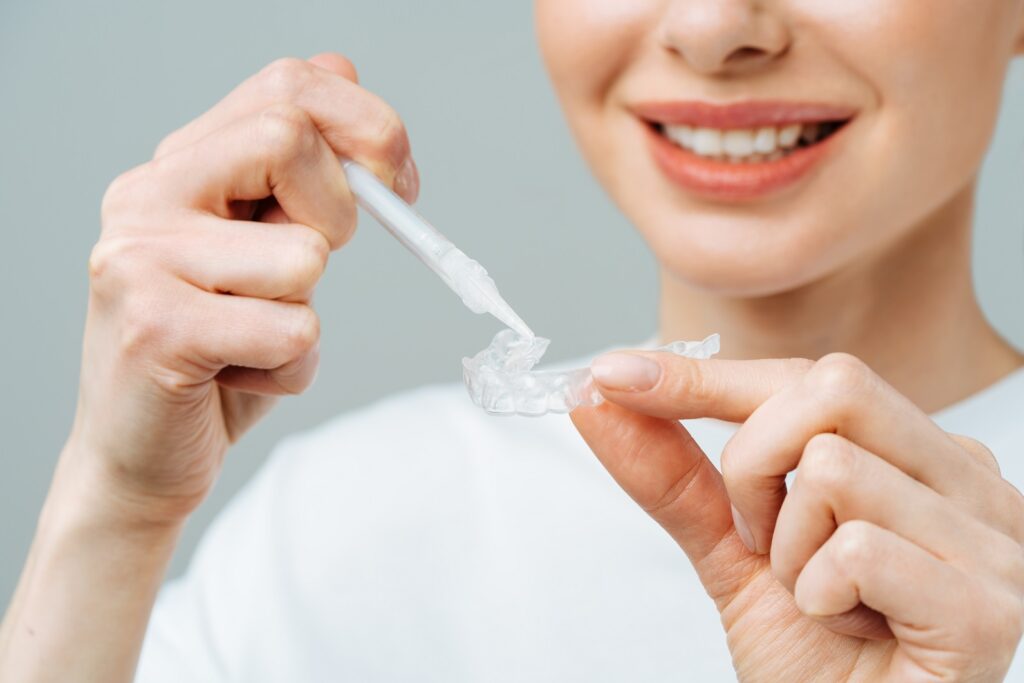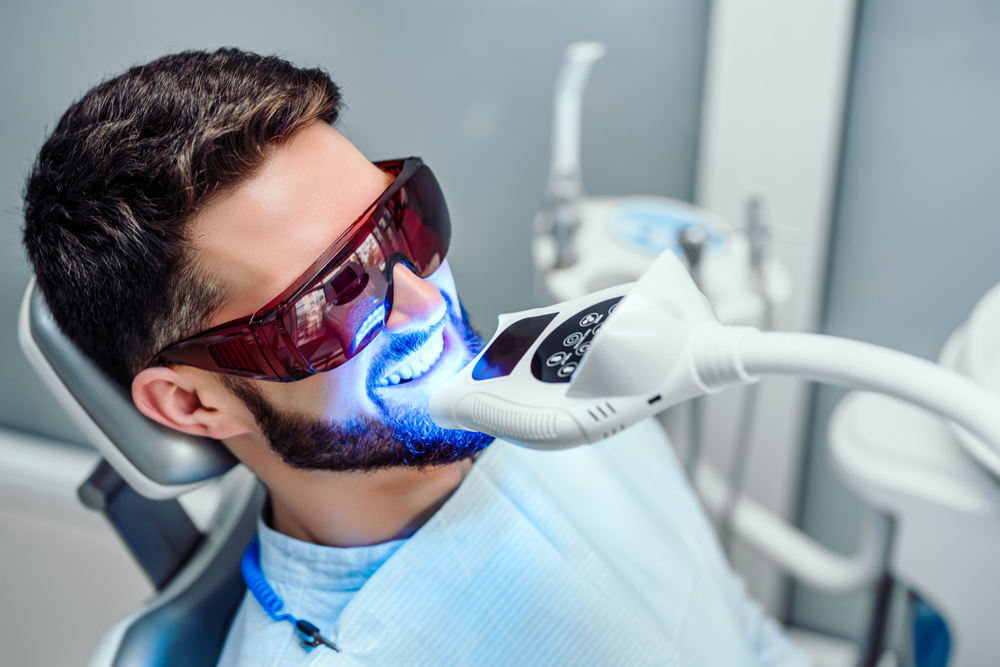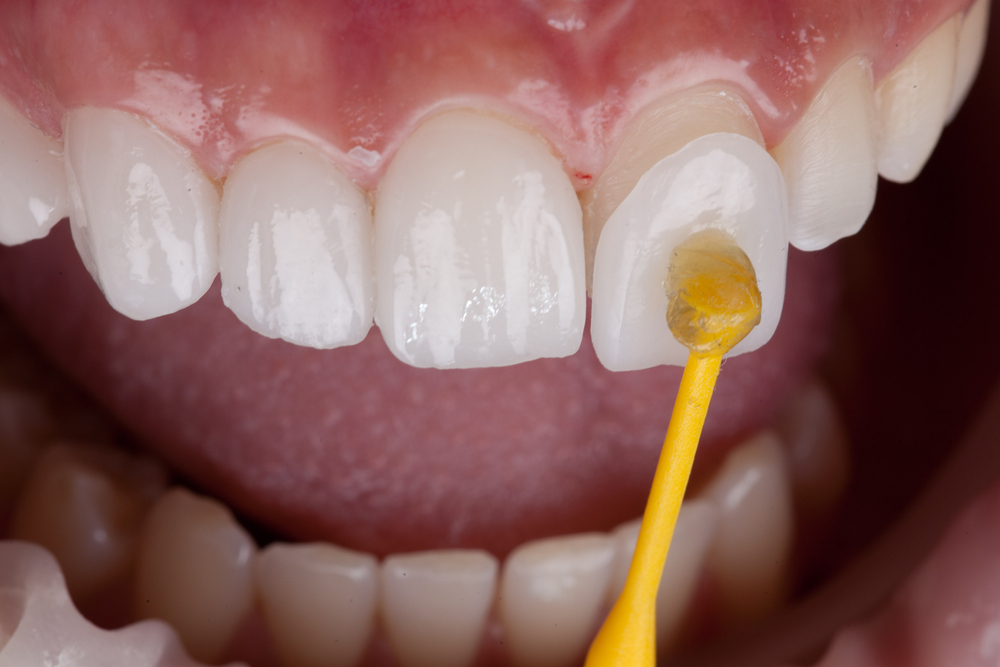In the pursuit of a bright and sparkling smile, teeth whitening has become a popular choice for many. It’s not just about looking good; a whiter smile can boost your confidence and make you feel great about your appearance. Teeth whitening is a simple yet effective cosmetic dental procedure that can significantly enhance your smile’s brightness. Throughout this article, we’ll explore the various methods of teeth whitening, each with its own set of benefits. From professional dental treatments to at-home whitening kits, you’ll learn how to choose the best option for your needs. Whether you’re looking to remove surface stains or seeking a deeper whitening solution, this guide will provide you with all the information you need to achieve that dazzling smile.
Understanding Tooth Discoloration

Have you ever wondered why teeth change color and lose their brightness? Tooth discoloration can happen for several reasons, and it’s a common concern for many. One of the most common causes is what we eat and drink. Foods and beverages like coffee, tea, red wine, and even some fruits can stain your teeth over time. It’s not just about food, though; lifestyle factors such as smoking can also lead to yellowing teeth.
Aging plays a role too. As we get older, the outer layer of our teeth, called enamel, gets thinner, revealing the naturally yellower dentin underneath. Some medications and mouth rinses can also affect tooth color. Even though these changes are natural, they can make you feel self-conscious about your smile.
Understanding the causes of tooth discoloration is the first step in choosing the right teeth whitening method. Whether it’s a surface stain or something deeper, there are effective ways to bring back the brightness to your smile. With the right approach, you can minimize the effects of these factors and keep your smile bright and beautiful.
Professional Teeth Whitening: Procedures and Benefits
When it comes to teeth whitening, having it done by a professional at a dental office is often the best choice. Why? Because professional teeth whitening is not only safe but also offers more effective and long-lasting results. Dentists use advanced techniques that can make your teeth several shades brighter in just one visit.
One common method is custom tray whitening. Here, your dentist makes a special tray that fits perfectly over your teeth. This tray is then filled with a powerful whitening gel. Because the tray is made just for you, it ensures that every angle of your tooth gets covered by the gel. This method is great for even and thorough whitening.
Another popular technique is light-activated whitening. During this procedure, a dentist applies a whitening agent to your teeth and then uses a special light to speed up the whitening process. This method can give you noticeably whiter teeth in about an hour. It’s perfect for those who want instant results.
Professional teeth whitening is more than just effective; it’s also about safety and comfort. Your dentist will protect your gums and mouth from the strong whitening agents, reducing the risk of sensitivity and irritation. With professional teeth whitening, you’re not just getting a brighter smile; you’re also getting the peace of mind that it’s done safely and correctly.
Home Teeth Whitening Kits: A Convenient Alternative

For many, visiting a dentist for teeth whitening isn’t always convenient or preferred. That’s where home teeth whitening kits come in as a great alternative. These kits allow you to whiten your teeth in the comfort and privacy of your home.
There are various types of home whitening kits available, including whitening strips, gels, and LED light systems. Whitening strips are thin, flexible pieces of plastic coated in whitening gel. They’re easy to apply and can be used while doing other activities. Whitening gels, often used with trays, provide a more comprehensive application, similar to what you might experience at a dentist’s office. LED light systems are a newer option, using light to enhance the effectiveness of the whitening gel.
While these home kits are convenient, they’re generally not as powerful as professional treatments. This means it might take longer to see results, and the whitening might not be as noticeable. However, for those with mild discoloration or for maintaining a professional whitening treatment, these kits can be quite effective.
Whether you choose professional teeth whitening or a home kit, the key is to follow the instructions carefully and maintain good oral hygiene. Both methods can help you achieve a brighter smile, boosting your confidence and the way you feel about your appearance.
Dental Bleaching: Techniques and Safety
Dental bleaching is a widely used method for achieving a brighter smile. It involves applying a bleaching agent, usually containing hydrogen peroxide or carbamide peroxide, to the teeth. This bleaching agent works to break down stains, making your teeth look whiter and brighter. There are several techniques for dental bleaching, ranging from in-office treatments to at-home kits prescribed by dentists.
In-office bleaching usually offers the fastest and most dramatic results. The dentist applies a high-concentration bleaching gel to the teeth and often uses a special light or laser to enhance the bleaching process. This method is closely monitored by dental professionals, ensuring safety and effectiveness.
At-home bleaching kits prescribed by dentists involve custom-made trays and a lower concentration bleaching gel. You fill the trays with the gel and wear them for a specified amount of time each day. These kits offer more gradual results but are a safe and effective way to whiten teeth at home under the guidance of a dentist.
Safety is a top priority in dental bleaching. The main concern with bleaching agents is potential tooth sensitivity and gum irritation. Dentists take several precautions, like using protective barriers on the gums and carefully controlling the bleaching agent’s application. Following your dentist’s instructions and attending regular check-ups are crucial for a safe and successful bleaching process.
Laser Teeth Whitening: Advanced Technology for Brighter Smiles
Laser teeth whitening is a state-of-the-art method, representing the forefront of dental technology in cosmetic dentistry. It combines a powerful whitening gel with laser technology to achieve faster and more effective whitening results.
In a laser teeth whitening procedure, a dentist first applies a professional-grade bleaching agent to your teeth. Then, a laser is used to activate the whitening agent. The laser’s light speeds up the chemical reaction of the bleaching compound, breaking down stubborn stains and discoloration more effectively. This process usually takes about an hour, making it a quick solution for those seeking immediate results.
One of the main advantages of laser teeth whitening is its efficiency in delivering significant whitening in a single session. It’s particularly suitable for individuals with busy schedules who want quick results. Additionally, laser whitening can be more effective in treating deep stains and discoloration compared to other methods.
However, it’s important to consider that laser teeth whitening may not be suitable for everyone. It’s generally more expensive than other whitening methods and may cause temporary tooth sensitivity. As with any dental procedure, consulting with a dentist is essential to determine if laser teeth whitening is the right choice for you, ensuring both the health and beauty of your smile.
Whitening Toothpaste and Products: Do They Work?
When it comes to teeth whitening, many people first turn to whitening toothpaste and over-the-counter products due to their accessibility and ease of use. But how effective are these products?
Whitening toothpastes typically contain mild abrasives and chemical agents that work to remove surface stains on the teeth. Some may also have polishing agents that provide additional stain removal effectiveness. While these toothpastes can help remove surface stains and make teeth appear slightly whiter, they don’t have the same whitening power as professional treatments or bleaching. They are more suitable for maintaining a white smile after having undergone professional teeth whitening or for those with minor staining.
Over-the-counter whitening products, like whitening strips and gels, contain low concentrations of peroxide-based bleaching agents. These products can be more effective than whitening toothpastes but usually require consistent and prolonged use to see noticeable results. They are a good option for those looking for a budget-friendly way to whiten teeth, especially if the discoloration is not severe.
It’s important to use these products as directed to avoid overuse, which can lead to tooth sensitivity or gum irritation. Also, for lasting and significant whitening, these products should be seen as part of a broader dental care routine, not a complete solution.
The Costs of Teeth Whitening
The cost of teeth whitening can vary widely depending on the method chosen. Professional teeth whitening at a dental office is generally the most expensive option, but it offers the most dramatic and fastest results. The cost can vary based on the technique used and the dentist’s location, but it’s often seen as an investment for its long-lasting and effective results.
At-home teeth whitening kits prescribed by dentists are usually less expensive than in-office treatments but more costly than over-the-counter products. These kits offer the benefit of professional oversight and custom-fitted trays for more even whitening.
Over-the-counter products like whitening toothpastes and strips are the most budget-friendly options. While they are the least expensive, they also tend to be the least effective for significant whitening needs.
Most dental insurance plans do not cover cosmetic procedures like teeth whitening, so it’s often an out-of-pocket expense. However, some dental offices offer financing plans or payment options to make the procedure more accessible. When considering teeth whitening, it’s important to weigh the costs against the potential benefits and choose the option that best fits your budget and whitening needs.
Maintaining Your Bright Smile: Post-Whitening Care
After you’ve achieved that coveted bright smile through teeth whitening, it’s important to take steps to maintain the results. Proper post-whitening care is crucial in extending the longevity of your teeth whitening. Here are some tips and recommendations to help keep your smile shining bright:
- Avoid Stain-Causing Foods and Drinks: Certain foods and beverages like coffee, tea, red wine, and dark-colored sodas can cause staining. If you do consume these, consider using a straw to minimize contact with your teeth.
- Regular Dental Hygiene: Brush your teeth at least twice a day and floss daily. Use a whitening toothpaste to help remove surface stains and prevent yellowing. Regular brushing and flossing help maintain your dental health and the whiteness of your teeth.
- Routine Dental Checkups: Regular visits to your dentist for cleanings and checkups can help maintain your teeth whitening results. Professional cleanings remove plaque and surface stains, keeping your teeth looking their best.
- Quit Smoking: Smoking is one of the primary causes of tooth discoloration. Quitting smoking not only helps maintain your teeth whitening results but also improves your overall oral health.
- Immediate Rinsing: After consuming stain-causing foods or drinks, rinse your mouth with water. This helps to wash away substances that can stain your teeth.
- Touch-Up Treatments: Depending on the whitening method used, you may need occasional touch-up treatments. Consult with your dentist about the recommended frequency.
Natural Teeth Whitening Methods: Myths and Facts
The internet is full of natural teeth whitening remedies, but it’s important to separate the myths from the facts. While some natural methods can help to a certain extent, they are usually not as effective as professional treatments. Here’s a look at some common natural teeth whitening methods:
- Baking Soda: Often touted for its whitening properties, baking soda can help remove surface stains. However, it should be used cautiously as it’s abrasive and could damage tooth enamel if used too frequently.
- Hydrogen Peroxide: A mild bleach, hydrogen peroxide can whiten teeth. However, improper use can lead to gum irritation and tooth sensitivity. It’s safer to use products that contain hydrogen peroxide in concentrations approved for dental use.
- Fruits like Strawberries and Pineapple: Some claim that certain fruits can whiten teeth. While they may help clean the teeth to some extent, there’s no scientific evidence that they can effectively bleach teeth.
- Oil Pulling: This traditional remedy involves swishing oil (like coconut oil) in the mouth. While it’s a good oral hygiene practice, its teeth whitening effects are not scientifically proven.
- Activated Charcoal: Charcoal products claim to remove stains, but they can be too abrasive and might wear down enamel, leading to more harm than good.
In conclusion, while natural methods might offer some level of stain removal, they are not a substitute for professional teeth whitening treatments. Always consult with your dentist before trying any home remedies for teeth whitening to ensure the health and safety of your teeth.
Teeth Whitening Safety: What You Need to Know
When considering teeth whitening, it’s crucial to prioritize safety. There are many myths and misconceptions about teeth whitening that can cause confusion. One common myth is that teeth whitening damages enamel. The truth is, when done correctly and under the guidance of dental professionals, teeth whitening is a safe procedure. The bleaching agents used are designed to be effective without harming the tooth’s structure.
Another concern is tooth sensitivity and gum irritation, which can occur during the whitening process. This is usually temporary and can be minimized by using the correct concentration of whitening agent and following the dentist’s instructions. It’s essential to communicate with your dentist if you experience sensitivity, as they can adjust the treatment to make it more comfortable.
It’s also important to note that not everyone is a suitable candidate for teeth whitening. People with dental restorations, very sensitive teeth, or certain dental conditions may need to explore alternative options. This is why consulting with a dental professional is crucial. They can evaluate your oral health and recommend the most suitable and safe whitening treatment for you.
Achieving and Maintaining a Brighter Smile
In conclusion, achieving a brighter smile through teeth whitening is a journey that combines the right choice of treatment with good oral hygiene practices and lifestyle choices. Remember, the key to a successful whitening experience is to choose the method that suits your needs and to follow through with proper maintenance. By avoiding stain-causing foods and drinks, practicing good oral hygiene, and scheduling regular dental visits, you can enjoy your bright smile for a longer time. And if you’re ever in doubt, your dentist is your best resource for personalized advice and effective solutions.
Your Partner in Dental Health: Smile Science Dental Spa in Glendale, AZ
At Smile Science Dental Spa in Glendale, AZ, we understand the importance of a bright and healthy smile. Led by Dr. Richard Dawson and Dr. John Turke, our team is dedicated to providing top-notch dental care. We offer a wide range of services, from general dentistry to advanced cosmetic procedures like teeth whitening. Our approach combines the latest technology with a warm, patient-centered experience. We’re here to guide you through every step of your dental health journey, ensuring you achieve and maintain the smile you’ve always wanted. Trust us to be your partner in achieving a brighter, healthier smile.





